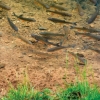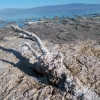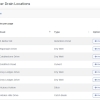
Why We Need a New Approach
Annual (or even quarterly) MS4 refresher courses are mandatory under the NPDES Phase II program, yet completion logs and pop-quiz scores often reveal that municipal crews quickly forget key practices such as spill-response or best management practice (BMP) housekeeping. Environmental Protection Agency (EPA) guidance notes that the absence of ongoing, engaging refreshers is a common weakness in stormwater programs, leading to audit findings and preventable discharges (epa.gov).
Gamification, applying proven game mechanics like points, badges and story-driven challenges, has emerged as a cost-effective fix. Research shows that adding game elements raises learner motivation and markedly improves knowledge retention in compliance settings (lrn.com).
| Game Mechanic | Why It Matters for MS4 Staff | Practical Example |
|---|---|---|
| Points & Badges | Provide instant feedback and trigger dopamine rewards that cement memory. | Award a “Spill-Stopper” badge after a perfect chemical-handling mini-game. |
| Leaderboards | Encourage friendly competition across departments or DPW garages. | Post a monthly IDDE score table on the intranet. |
| Branching Scenarios | Allow learners to test judgment in a safe simulation and see consequences. | Choose-your-path story of responding to an illicit discharge call. |
| Timers & Time-Savers | Simulate field pressure and build procedural fluency. | “Beat the clock” inspection of a virtual culvert before rain starts. |
| Progress Bars & Streaks | Nudge staff to return for micro-lessons and complete the series. | Five-day stormwater micro-challenge with a streak bonus for daily login. |
A 2025 case study of a global industrial firm reported 100 % course completion and 3,700 staff-hours saved after replacing slide decks with a gamified ethics program (eidesign.net) - evidence that the same tactics can pay off for stormwater refresher content.

Map each Minimum Control Measure (MCM) to a mini-game
IDDE → contaminant “whodunit” quiz
Construction runoff → erosion-control sandbox
Good-housekeeping → timed shop-cleanup simulation
Build micro-modules (5-8 minutes) so crews can finish between field tasks.
Blend media: 360° photos from local outfalls, short explainer videos and quick polls.
Leverage low-code tools (Articulate Rise, Kahoot, Quizizz) or full LMS platforms with gamification plugins (e.g., LRN Catalyst, Axonify).
Localize the story - use your town’s watershed map and familiar street names for authenticity.
Ready-made videos and webinars in the INAFSM resource sheet or EPA’s Clean Water Academy can be wrapped into these modules, saving production time (epa.gov).
| Phase | Key Actions | Metrics |
|---|---|---|
| Pilot (Month 1–2) | Convert one high-risk topic (e.g., fuel-station BMPs) into a gamified module; recruit 15 volunteers. | Pre/post quiz delta, satisfaction survey. |
| Iterate (Month 3) | Refine based on feedback; add accessibility features and mobile view. | 90 %+ positive UX rating. |
| Roll-Out (Month 4–6) | Launch the full six-module track; announce leaderboard on pay-stubs and tailgate meetings. | Completion rate, average score, time-to-completion. |
| Sustain (Ongoing) | Quarterly “boss battles” tied to seasonal tasks (e.g., de-icing BMPs in November). | Year-over-year reduction in corrective-action memos. |
Knowledge retention - Repeat a micro-quiz 60 days post-training. Aim for ≤ 10 % score drop.
Behavioral change - Track field audit findings or spill reports. A downward trend indicates applied learning.
Engagement analytics - LMS data on time-on-task and voluntary replays.
Regulatory outcomes - Fewer MS4 audit deficiencies and faster corrective actions logged in your SWMP.
Rotate seasonal themes (e.g., Spring “BMP Quest”).
Offer small perks: coffee-gift cards for top monthly scores.
Let crews design new challenges - peer-generated content keeps it fresh.
Publish a departmental dashboard so management can recognize high performers publicly.
Gamification turns the once-dreaded MS4 refresher into a bite-sized, high-impact experience that municipal crews actually enjoy. With modest investment in authoring tools and a clear implementation plan, DPWs can raise retention, slash training hours and strengthen audit readiness, all while fostering a culture that values clean water.
 Wetlands are often described as the kidneys of the watershed because they filter, slow, and transform the water that passes through them in ways that …
Wetlands are often described as the kidneys of the watershed because they filter, slow, and transform the water that passes through them in ways that …
 Field inspections of catch basins, manholes, culverts, and outfalls form the foundation of responsible stormwater management. These routine checks giv…
Field inspections of catch basins, manholes, culverts, and outfalls form the foundation of responsible stormwater management. These routine checks giv…
 Habitat disruption around drainage structures is often subtle at first, and many of the earliest signs tend to appear during ordinary field work rathe…
Habitat disruption around drainage structures is often subtle at first, and many of the earliest signs tend to appear during ordinary field work rathe…
 Harmful algal blooms have become one of the most pressing water quality problems in many regions, and their rise has been linked to a complicated blen…
Harmful algal blooms have become one of the most pressing water quality problems in many regions, and their rise has been linked to a complicated blen…
 The Salton Sea is one of California’s most unusual and tragic landscapes, a place shaped by accident, transformed by ambition, and ultimately pu…
The Salton Sea is one of California’s most unusual and tragic landscapes, a place shaped by accident, transformed by ambition, and ultimately pu…
 *The screenshots used in this article are from Roadwurx, an asset management software created for road maintenance departments. Managing a town’…
*The screenshots used in this article are from Roadwurx, an asset management software created for road maintenance departments. Managing a town’…